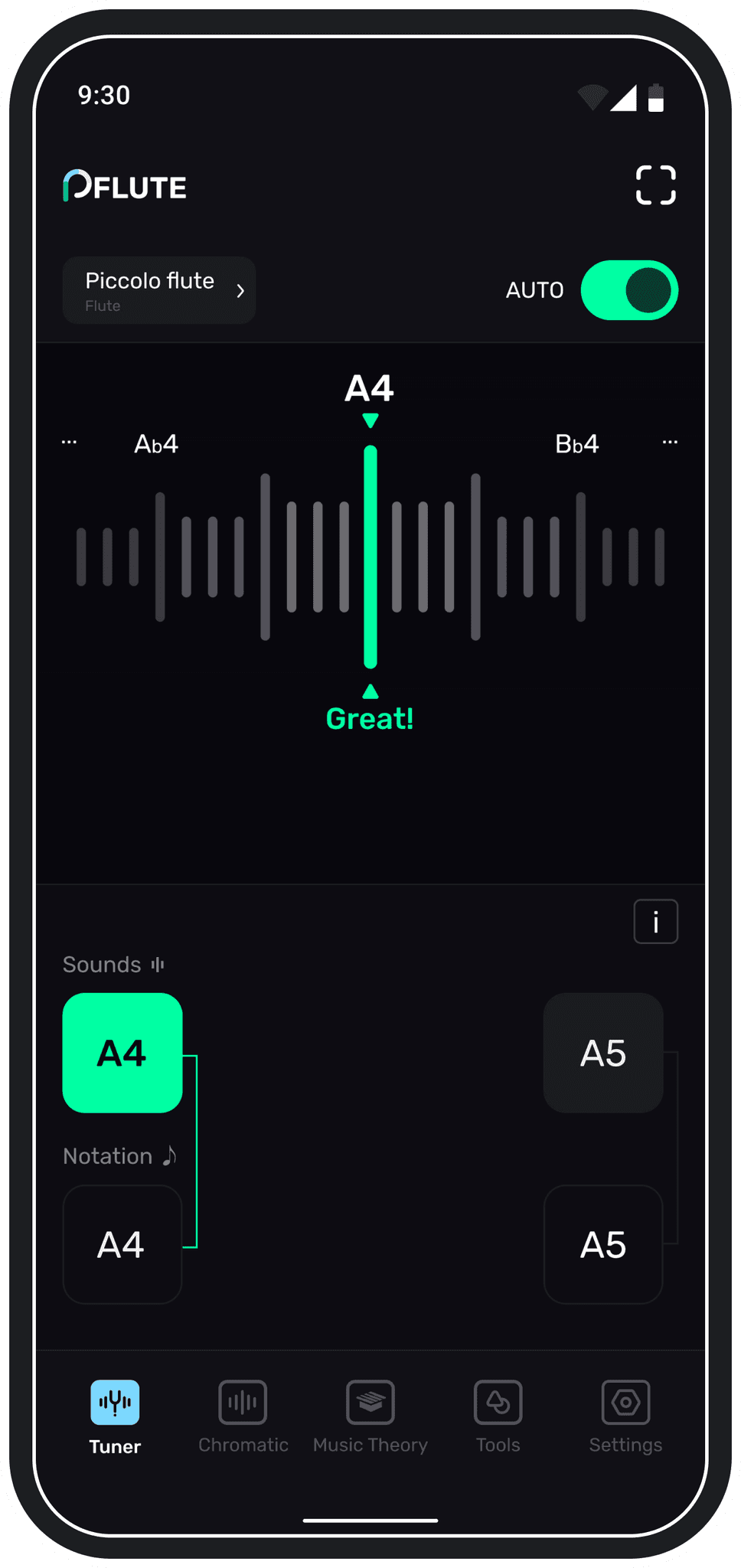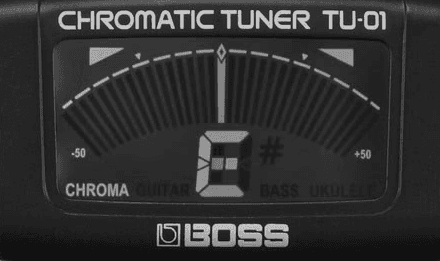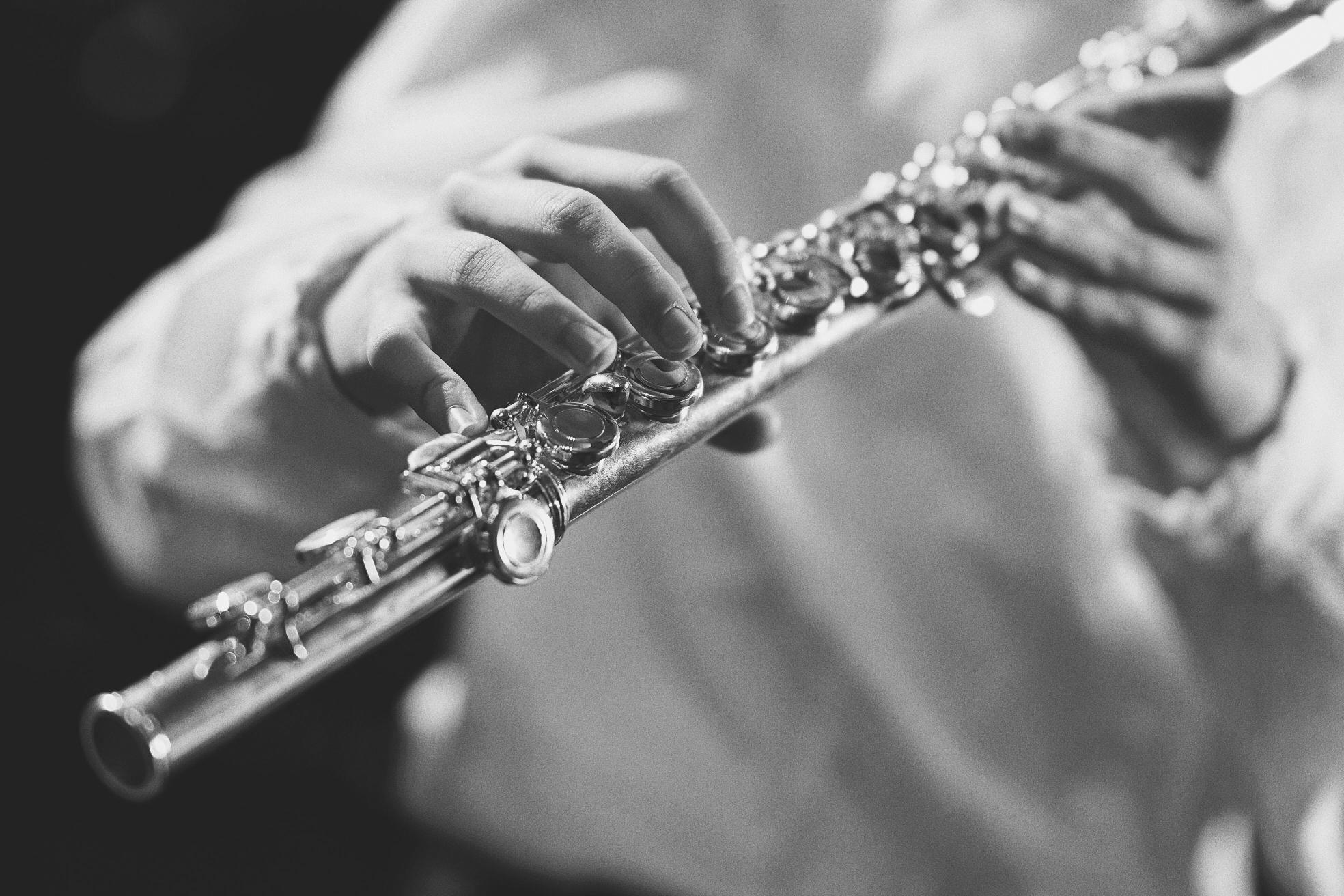
Perfect Flute Tuner App
Perfect Flute Tuner App
Perfect Flute Tuner optimized exclusively for flutist.
A simplified version of Perfect Tuner.





Precise Tuner
Metronome
Music Theory
Custom Tuning
Chromatic Tuner

ARTICLES

How To Tune a Flute
Tuning a flute properly is essential for achieving a clear and resonant tone across all registers. Unlike string or brass instruments, where tuning involves adjusting strings or slides, tuning a flute involves adjusting the headjoint and controlling embouchure and breath pressure.

How and When to Use a Chromatic Tuner – A Guide for Advanced Players
A chromatic tuner is a versatile tool that detects every possible musical note in the chromatic scale. Unlike instrument-specific tuners that focus only on specific pitches for standard tunings, a chromatic tuner allows you to tune to any note you want.

The History of Tuning Systems: From Just Intonation to Equal Temperament
The development of tuning systems is a fascinating journey through the history of music, mathematics, and cultural evolution. From the simplicity of just intonation to the versatility of equal temperament…

ARTICLES

How To Tune a Flute
Tuning a flute properly is essential for achieving a clear and resonant tone across all registers. Unlike string or brass instruments, where tuning involves adjusting strings or slides, tuning a flute involves adjusting the headjoint and controlling embouchure and breath pressure.

How and When to Use a Chromatic Tuner – A Guide for Advanced Players
A chromatic tuner is a versatile tool that detects every possible musical note in the chromatic scale. Unlike instrument-specific tuners that focus only on specific pitches for standard tunings, a chromatic tuner allows you to tune to any note you want.

The History of Tuning Systems: From Just Intonation to Equal Temperament
The development of tuning systems is a fascinating journey through the history of music, mathematics, and cultural evolution. From the simplicity of just intonation to the versatility of equal temperament…

ARTICLES

How To Tune a Flute
Tuning a flute properly is essential for achieving a clear and resonant tone across all registers. Unlike string or brass instruments, where tuning involves adjusting strings or slides, tuning a flute involves adjusting the headjoint and controlling embouchure and breath pressure.

How and When to Use a Chromatic Tuner – A Guide for Advanced Players
A chromatic tuner is a versatile tool that detects every possible musical note in the chromatic scale. Unlike instrument-specific tuners that focus only on specific pitches for standard tunings, a chromatic tuner allows you to tune to any note you want.

The History of Tuning Systems: From Just Intonation to Equal Temperament
The development of tuning systems is a fascinating journey through the history of music, mathematics, and cultural evolution. From the simplicity of just intonation to the versatility of equal temperament…
Precise Tuner
Metronome
Music Theory
Custom Tuning
Chromatic Tuner

FAQ
What is an instrument tuning?
Instrument tuning adjusts an instrument to specific pitches, like a guitar's standard E - A - D - G - B - E, with the thinnest string at 329.63 Hz (based on the reference A = 440 Hz standard). Proper tuning ensures harmony, prevents dissonance, and allows instruments to blend seamlessly in ensembles or orchestras.
How does a tuner work and how do I use it?
A tuner helps adjust an instrument’s pitch by analyzing sound or providing reference tones. Types include mobile apps (e.g., Perfect Tuner), clip-on tuners, built-in tuners, and traditional tuning forks. Apps like Perfect Tuner use a microphone to measure frequency, compare it to the reference pitch A = 440 Hz, and show if the pitch is flat, sharp, or in tune. They’re precise and convenient for tuning anywhere.
What is the easiest way to start tuning if I’m a complete beginner?
Choose the right Perfect Tuner app for your needs: the all-in-one Perfect Tuner supports over 20 instruments, while dedicated apps are tailored for specific ones like Guitar, Ukulele, Mandolin, Bass Guitar, Banjo, Balalaika, Bouzouki, Violin, Viola, Cello, Double Bass, Flute, Saxophone, Clarinet, Oboe, Trombone, and Trumpet. Each option ensures accurate tuning for your chosen instrument.
What is an instrument tuning?
Instrument tuning adjusts an instrument to specific pitches, like a guitar's standard E - A - D - G - B - E, with the thinnest string at 329.63 Hz (based on the reference A = 440 Hz standard). Proper tuning ensures harmony, prevents dissonance, and allows instruments to blend seamlessly in ensembles or orchestras.
How does a tuner work and how do I use it?
A tuner helps adjust an instrument’s pitch by analyzing sound or providing reference tones. Types include mobile apps (e.g., Perfect Tuner), clip-on tuners, built-in tuners, and traditional tuning forks. Apps like Perfect Tuner use a microphone to measure frequency, compare it to the reference pitch A = 440 Hz, and show if the pitch is flat, sharp, or in tune. They’re precise and convenient for tuning anywhere.
What is the easiest way to start tuning if I’m a complete beginner?
Choose the right Perfect Tuner app for your needs: the all-in-one Perfect Tuner supports over 20 instruments, while dedicated apps are tailored for specific ones like Guitar, Ukulele, Mandolin, Bass Guitar, Banjo, Balalaika, Bouzouki, Violin, Viola, Cello, Double Bass, Flute, Saxophone, Clarinet, Oboe, Trombone, and Trumpet. Each option ensures accurate tuning for your chosen instrument.
What is an instrument tuning?
Instrument tuning adjusts an instrument to specific pitches, like a guitar's standard E - A - D - G - B - E, with the thinnest string at 329.63 Hz (based on the reference A = 440 Hz standard). Proper tuning ensures harmony, prevents dissonance, and allows instruments to blend seamlessly in ensembles or orchestras.
How does a tuner work and how do I use it?
A tuner helps adjust an instrument’s pitch by analyzing sound or providing reference tones. Types include mobile apps (e.g., Perfect Tuner), clip-on tuners, built-in tuners, and traditional tuning forks. Apps like Perfect Tuner use a microphone to measure frequency, compare it to the reference pitch A = 440 Hz, and show if the pitch is flat, sharp, or in tune. They’re precise and convenient for tuning anywhere.
What is the easiest way to start tuning if I’m a complete beginner?
Choose the right Perfect Tuner app for your needs: the all-in-one Perfect Tuner supports over 20 instruments, while dedicated apps are tailored for specific ones like Guitar, Ukulele, Mandolin, Bass Guitar, Banjo, Balalaika, Bouzouki, Violin, Viola, Cello, Double Bass, Flute, Saxophone, Clarinet, Oboe, Trombone, and Trumpet. Each option ensures accurate tuning for your chosen instrument.
Netigen Kluzowicz sp. j.
ul. Dobrego Pasterza 19 A/U3
31-416 Kraków
NIP: 945-217-95-80
REGON: 123132640
KRS: 0000512034



